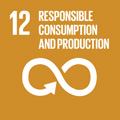- Docente: Marco Dalla Rosa
- Credits: 4
- SSD: AGR/15
- Language: Italian
- Moduli: Marco Dalla Rosa (Modulo Mod 1) Silvia Tappi (Modulo Mod 2)
- Teaching Mode: Traditional lectures (Modulo Mod 1) Traditional lectures (Modulo Mod 2)
- Campus: Cesena
-
Corso:
First cycle degree programme (L) in
Food Technology (cod. 8528)
Also valid for First cycle degree programme (L) in Viticulture and Enology (cod. 8527)
-
from Feb 20, 2024 to Apr 09, 2024
-
from Apr 16, 2024 to May 21, 2024
Learning outcomes
The aim of course is to provide the knowledge of cereal and bakery products compartment, the technological processes and quality control about raw materials production (flours, semolina, etc.), and their derived products (bread, pasta and bakery products).
Course contents
Module 1 - Technology of Cereals and Derivates Prof. M. Dalla Rosa
The cereal production in Italy and in the world. Wheat grain structure, composition and functionality. Proteins: gluten compositions, breadmaking and pasta quality. Carbohydrates: monosaccharides, disaccharides and oligosaccharides, starch, pentosans. Milling process. Quality criteria of milling products.
Dough rheology and chemistry: physical dough testing instruments (Brabender farinograph, Chopin alveograph, etc.), influence of physical, chemical factors (work, time, temperature, water, oxidizing agents) on dough properties, influence of flour or semolina components.
Breadmaking and pasta quality relationship to properties of cereal components. Technological, chemical and physical aspects of bread and pasta production. Other cereal and starchy products. Extrusion cooking applications.
Module 2
TECHNOLOGIES OF CEREALS AND DERIVATIVES - Analysis and laboratory exercises - Dr. S. Tappi
Methods of evaluating functional, physical, and rheological properties of cereal-based doughs and finished products
Kieffer test, image analysis, colorimetry, principles of differential scanning calorimetry (DSC), rheological parameters of doughs
Readings/Bibliography
Lesson slides and bibliographic material provided by the teacher during the course.
· B. Carrai , Arte bianca (materie prime, processi e controlli), Il Sole 24 ore Edagricole, Bologna, 2010.
· P. Giorilli, S. Lauri, Il pane: un'arte, una tecnologia, Franco Lucisano Editore -Zanichelli, Milano, 1996.
· T. Lanza , Tecnologia e pratica per la produzione dei biscotti, Chiriotti Editore, Pinerolo, 2006.
· G. Mondelli , Essiccazione statica della pasta, Edizioni Avenue media, Milano-Bologna, 2009.
· L. Milatovic, G. Mondelli , La tecnologia della pasta alimentare, Chiriotti Editore, Pinerolo, 1989.
Teaching methods
Module 1
Classroom theoretical lectures and seminars
Group work with Elaboration of a paper/presentation related to a grain-derived product
Spreadsheet and blackboard exercise as a subject balance exercise
Module 2
Classroom theoretical lectures on analysis of doughs and final products
Laboratory exercises
Guided tours of companies in the industry.
Assessment methods
Module 1 + Module 2
The verification of learning is through a final written test with items related to both Modules: the use of supporting materials such as books, notes, computer aids is not allowed, except for special needs (e.g., DSA). The paper/presentation of group work will be given a weight on the final grade equal to 30% of the final grade.
The written test will contain a series of multiple-choice and open-ended questions and is designed to ascertain and verify the skills and knowledge acquired in the context of the topics covered in the entire course program. The final grade is expressed in thirtieths. The verbalization of the assessment achieved takes place on the dates set and indicated in Almaesami. It is possible to view the assignment and ask for clarification.
Teaching tools
PCs and Materials provided by the lecturer and available on websites, pointed out by the lecturer
Specific equipment and instrumentation in the laboratory. (Module 2)
Office hours
See the website of Marco Dalla Rosa
See the website of Silvia Tappi
SDGs



This teaching activity contributes to the achievement of the Sustainable Development Goals of the UN 2030 Agenda.
